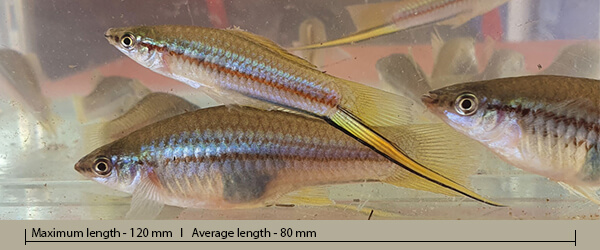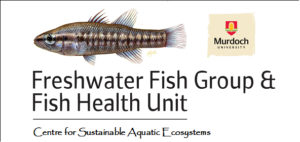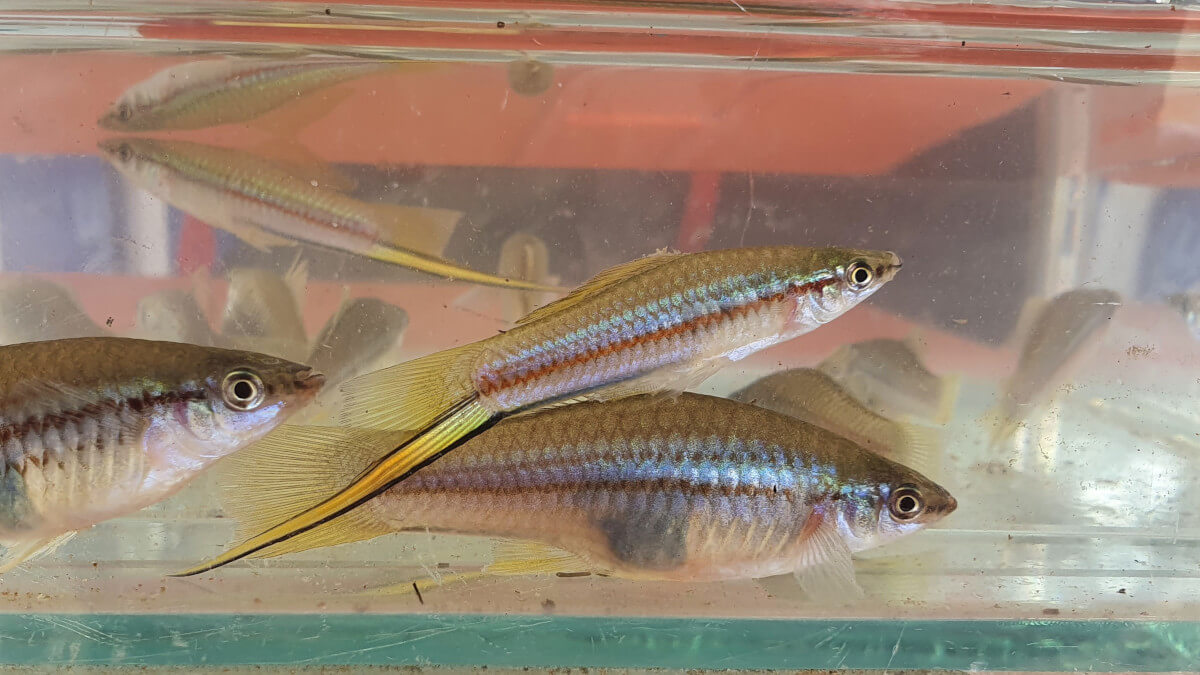Green swordtail - Xiphophorus helleri
This page was created in partnership with the Freshwater Fish Group and Fish Health Unit at Murdoch University
Identification

An introduced fish and a pest species in Australia. They are sexually dimorphic, meaning males and females are physically different in appearance. Males have a distinctive long, sword-like, extension of the lower caudal fin that females do not possess, while adult females tend to be bigger bodied than males. The average size of adults is around 80 mm total length (nose to tip of tail) but can reach up to 120 mm. They are generally bronze to olive coloured when found in the wild in WA.
Distribution
A native of North and Central America, they were first recorded in the wild in eastern Australia in the 1960s. First detected in WA in the Irwin River during the summer of 1998-99 (Morgan and Gill 2001). Since then it has also been recorded in some wetlands in Perth.
Habitat
They prefer swift-flowing, heavily vegetated rivers and streams, but as is typical with most invasive species will tolerate a range of habitats and conditions which often gives exotic species a competitive advantage over native fish. For example, they can tolerate a range of water salinities and temperatures as well as oxygen deficient waters, by gulping air at the surface of the water (Arthington et al. 1986 in Morgan and Gill 2001), that WA native fish often cannot survive in.
Biology
An aggressive species that are likely to out-compete native fish. The males are known to spend much of their time aggressively fighting with other males, and possibly other species (Franck and Ribowski, 1993 in Morgan and Gill 2001). They are omnivorous (though juveniles appear to consume greater quantities of aquatic invertebrates than larger size classes), and can breed all year round in warmer climates, with brood sizes of up to 75 young (Maddern et al 2011).
Management
Captured individuals should be disposed of humanely (e.g. in an ice slurry). If possible, send the individual along with a photo and location details to the aquatic biosecurity section of the Department of Primary Industry and Regional Development . Please report any suspected aquatic pest species by calling FishWatch hotline (1800 815 507), or via the WA PestWatch website or phone app.
Further information
Contact the department’s River Science team, or the Murdoch Freshwater Fish Group via email: fish@murdoch.edu.au, or go to their website: www.freshwaterfishgroup.com


References
Morgan DL and Gill HS (2001). The green swordtail Xiphophorus helleri Heckel (Poeciliidae): another aquarium fish established in the wild in Western Australia. Records of the Western Australian Museum 20: 349-352
Maddern MG, Gill HS and Morgan DL (2011). Biology and invasive potential of the introduced swordtail Xiphophorus helleri (Poeciliidae) in Western Australia. Aquatic Conservation: Marine and Freshwater Ecosystems 21: 282-291


